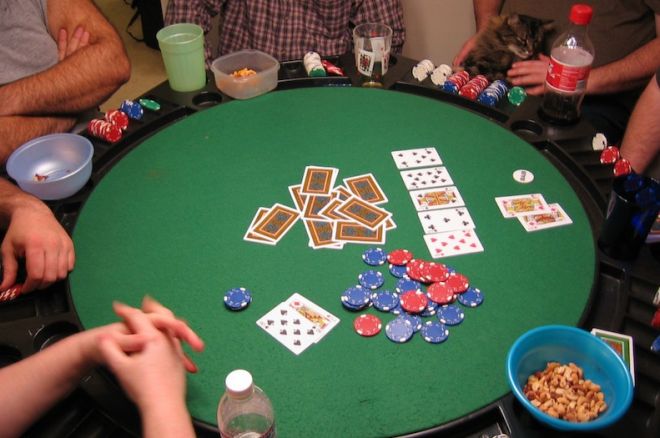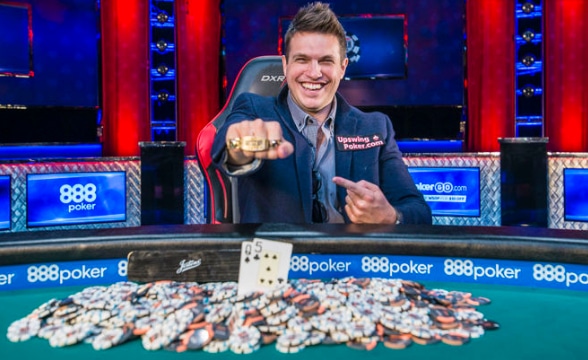Plays In Poker
- Top Dirtiest Plays In Poker World
- Play Poker Online
- Poker Games Free
- Free Poker Games Online
- Who Plays First In Poker
Exploitative Play In Live Poker. Download Exploitative Play In Live Poker PDF/ePub or read online books in Mobi eBooks. Click Download or Read Online button to get Exploitative Play In Live Poker book now. This site is like a library, Use search box in the widget to get ebook that you want. Exploitative Play in Live Poker is a ground-breaking work that teaches you how to create the circumstances where your opponents will be likely to blunder and how to exploit them when they do. To achieve this you will need to put to one side starting hand. The home of free-to-play poker. We pride ourselves on putting our players’ safety and security first. To ensure realistic game-play, top-ups are limited to 15,000 chips every 4 hours. If you’re new to online poker, we’re here to help you learn. From hand rankings to.
Wanna learn how to play free poker texas holdem, but don't want to embaress yourself in front of your friends on poker night?
/17-58a6f3393df78c345b6318e9.jpg)

Try our 'normal difficulty' Texas Holdem free poker game. It's single player, so you don't have to worry about looking the fool in front of your friends and family--and it's difficulty is just right for novice poker players!
Master the odds of real Texas Holdem by playing this free poker Texas Holdem game. Watch your skills improve as your high score shoots up with each free poker game. Each AI opponent has his own unique personality--just like real people--so you can figure out all the little quirks involved in playing real texas holdem poker
- Single player free poker game - Texas Holdem
- Master the odds of real Texas Holdem poker
- Compete against your own high score and watch your game improve
- Learn all five unique AI personalities - each with his / her own playing behavior
- Poker game is automatically saved as you play
DISCLAIMER: The games on this website are using PLAY (fake) money. No payouts will be awarded, there are no 'winnings', as all games represented by 247 Games LLC are free to play. Play strictly for fun.
Card Player Magazine, available in print and online, covers poker strategy, poker news, online and casino poker, and poker legislation. Sign up today for a digital subscription to access more than 800 magazine issues and get 26 new issues per year!
In a prior installment on Badeucey, we established a set of guidelines for the starting hands we should tend to play given that we were the first player to enter the pot. In this issue, the focus will be on what hands are playable when the pot has already been opened, and the factors that should be considered in order to determine if our holding is better played as a smooth-call or as a three-bet.
Pat Hands
Whenever you hold a playable pat hand, it is almost always in your best interest to reraise the opener and try to get the pot heads-up. A seven low with at a good three card underneath such as 2 3 5 6 7 increases the odds of scooping against a single opponent.
Some caution needs to be exercised with eight lows such as 2 5 6 7 8 and 3 45 6 8 where we essentially have no badugi hand. If we are up against an early position raiser, both of these hands should probably hit the muck.
This advice may seem overly tight, particularly with 3 4 5 6 8, however a solid player opening from early position will often either have a badugi or a very strong three-card badugi that they mostly plan to showdown unimproved. If our opponent is intent on going to the end regardless what happens in the hand, we are getting freerolled from the beginning.
The situation is different when the initial raiser originates from the cutoff or later position as this range will be weaker and not as showdown bound. In that circumstance, we should three-bet 3 4 5 6 8 in the hope that the pot is played heads-up and our opponent chooses to fold sometime before showdown.
One-Card Draws
Any made badugi that is an eight or lower should be reraised for both value and protection. If the raise comes from a steal position, reraising a rougher nine badugi such as 4 6 7 9 is also correct especially if they are loose and often drawing three. Since the underlying draw of 4 6 7 draw is quite rough, keeping the nine is probably best.
Holdings such as 2 5 6 9 can go either way. In straight Deuce-to-Seven Triple Draw we would always draw two in order to try and make stronger lows and any other nine we catch later on in the hand will help us in the same manner. However, in Badeucey discarding the 9 is forever eliminating one of our better badugi outs.

Therefore, with a hand like 2 5 6 9, we should tend to reraise and be flexible with our drawing decision depending on the remainder of the preflop action. If our reraise is successful in getting the pot heads-up we should probably keep the nine and draw one, and if it goes off multi-way we should opt to draw two.
When you hold very good one-card draws with a tri such as 2 3 5 7 or 2 3 4 8 where you plan to draw one, you also want to three-bet in the hopes of isolating your opponent. Even if we bump into a badugi, with premium draws to both sides your equity and playability is often quite good. In addition, we don’t want our reraising and drawing one range to be entirely comprised of badugis.
Three-Card Badugis (i.e. Two-Card Draws)
With three-card badugis, the decision between three-betting or just smooth-calling is often close. When making it we should take into account the opener’s position, your position, your hand, and the skill level of the players left to act behind you. For example, facing a somewhat tight early position opener with weak players in the blinds, flatting your entire three-card badugi range has merit in order to invite action players to enter the pot.
However, in most other situations it is usually best to reraise premium three-card badugis such as 2-3-5, 2-4-5, 3-4-5, 2-4-6, 2-3-7, and 2-4-7. There’s a value component to three-betting these hands in addition to increasing our scooping chances. In addition, as we discussed last issue, these hands effectively realize their equity relative to our opponent.
In particular, 3-4-5 gains tremendously getting the pot heads-up as it can win the badugi side unimproved, but can struggle to make strong lows due to potential straight draws. Hands such as 2-3-7 and 2-4-7 will not often win the badugi side unimproved, however, these holdings have strong two-way potential and three-betting them helps balance against doing so with only the lowest of our tri holdings.
Top Dirtiest Plays In Poker World
Weaker three-card badugis should mostly be flatted and which hands are playable are a function of your opponent’s playing style, the position from which he opened, and your position. For example, if a tight player opens from first position and we are one seat over in the hijack we should fold a mediocre hand like 2-6-8.

While position helps, it’s hard to envision that our opponent is opening many worse hands thus we should not seek out an uphill battle with so many players left to act behind us. In this situation, the bottom of our continuing range would probably be holdings such as 3-4-6 and 2-4-8. These hands make stronger badugis than 2-6-8 and also have the potential to reduce our incomplete to a three-card four.

Play Poker Online
Blind Defense
From the big blind you are getting good odds to continue against a single raise, however, it is difficult to defend profitably with as many hands as you can in another game such as Omaha eight-or-better. In Omaha hi-lo, you can take a flop with a somewhat junky hand and have a villain’s A A 2 3 drawing nearly dead once those three cards come down. However, in Badeucey your rough draws will only make rough hands, thus when you are up against the very top of your opponent’s range no miracle can save you.
When an opponent opens from early position, we must respect that range and play somewhat tight. While we can probably defend with any three-card seven or a smooth eight we must resist the temptation to play rougher holdings such as 3 7 8 that have reverse implied odds.
Cutoff and button opens are weaker, thus given the pot odds we can mostly defend any holding that we would have opened from those positions had the situation been reversed. For example, we can defend un-suited 2-3, 2-4, 2-5, and 2-7 holdings as well as a two-suited hand such as 2 3 7. Three-card badugis such as 5-6-8 and 3-7-8 are borderline plays; calling a button raise is fine but it is probably best to fold them against a cutoff open.
Poker Games Free
It may not seem like we are defending a lot of hands but the responsibility is also borne by the small blind to ensure that an over aggressive late position opener will not automatically profit. Against a very loose raiser the best response is to punish them with more three-bets with your good hands as opposed to loosening up your calling standards significantly. In addition, someone playing too many hands from late position will often get punished later on in the hand as they are usually playing rough draws with reverse implied odds.
In Badeucey, getting too far out of line before the first draw will often cost you money in the later rounds. A solid foundation of starting holdings is required to successfully navigate the later streets. ♠
Free Poker Games Online
Kevin Haney is a former actuary of MetLife but left the corporate job to focus on his passions for poker and fitness. He is co-owner of Elite Fitness Club in Oceanport, NJ and is a certified personal trainer. With regards to poker he got his start way back in 2003 and particularly enjoys taking new players interested in mixed games under his wing and quickly making them proficient in all variants. His new mixed-games website Counting Outs is a great starting resource for a plethora of games ranging from the traditional to the exotic. He can be reached at haneyk612@gmail.com.



